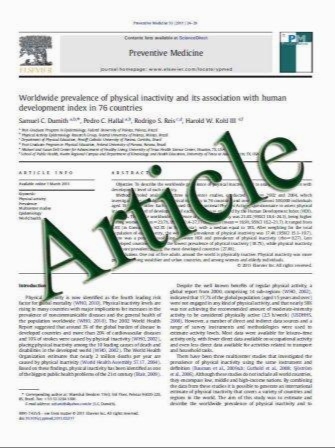Nuclear and cytoplasmic expressions of ERb1 and ERb2 are predictive of response to therapy and alters prognosis in familial breast cancers
- نوع فایل : کتاب
- زبان : انگلیسی
- مؤلف : Max Yan Mukta Rayoo Elena A. Takano kConFab Investigators Stephen B. Fox
- چاپ و سال / کشور: 2010
Description
Estrogen receptor (ER) a has been studied extensively in familial breast cancers but there are limited data on ERb and its isoforms. This is an important issue since many BRCA1-associated tumours are ‘‘triple negative’’ and are resistant to conventional and targeted therapies. We performed an immunohistochemical study of pan- ERb, ERb1 and ERb2 in a cohort of 123 familial breast carcinomas (35 BRCA1, 33 BRCA2 and 55 BRCAX) using a cut-off for positivity at 20% (Shaaban et al. in Clin Cancer Res 14:5228–5235, 2008). BRCA1 cancers were more likely to be nuclear ERa negative and nuclear pan- ERb positive (21/32, 66%) when compared with BRCA2 (2/29, 7%) and BRCAX cancers (11/49, 22%) (both P\0.001). For survival analysis, expression was also stratified using cut-offs defined by Bates et al. (Breast Cancer Res Treat 111:453–459, 2008) (score out of 7). Cytoplasmic ERb2 expression correlated with shorter overall survival at 15 years regardless of cut-off used (both P\0.046) At a cut-off score of 6 out of 7, cytoplasmic ERb2 expression correlated with a poorer response to chemotherapy in both univariate (P = 0.011) and multivariate analyses including grade, lymph node status and chemotherapy as an interaction variable (P = 0.045, Hazard ratio 1.22, 95% CI 1.004–9.87). A similar trend was seen in a univariate analysis with a cut-off of 20% although this did not reach statistical significance (P = 0.057). Expression of nuclear ERb1 was associated with a favourable response to endocrine therapy at 15 years regardless of cut-offs employed (both P\0.025). However, this did not reach statistical significance in a multivariate analysis (P[0.05). Since a significant proportion of ERa negative familial breast carcinomas are positive for nuclear ERb1 and cytoplasmic ERb2, the different ERb isoforms and their intracellular location may need to be assessed, to identify patients that may benefit from hormonal and chemotherapy.
Breast Cancer Res Treat (2011) 126:395–405 DOI 10.1007/s10549-010-0941-9 Received: 11 February 2010 / Accepted: 6 May 2010 / Published online: 20 May 2010 Springer Science+Business Media, LLC. 2010


